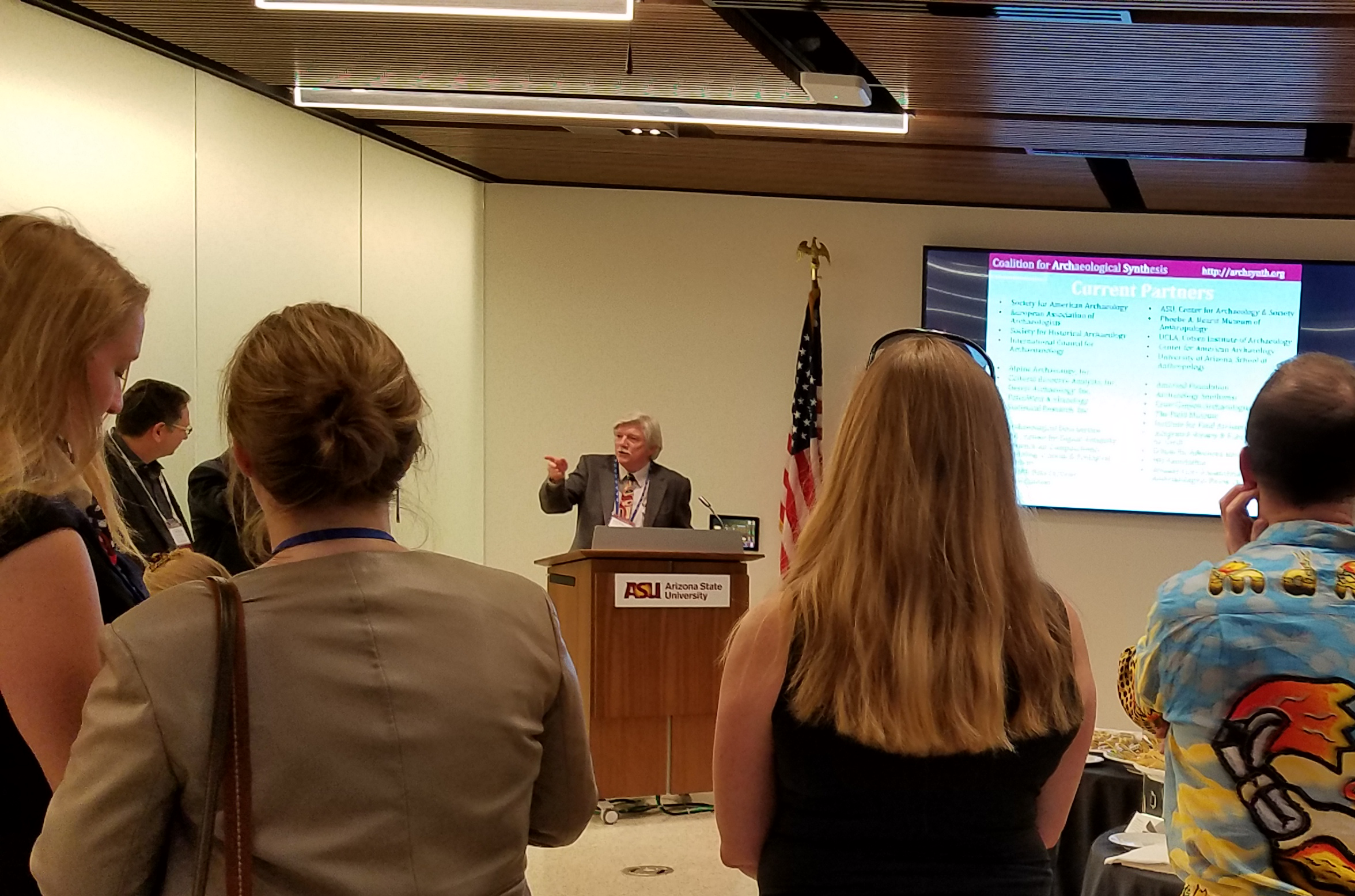Why the next big archaeological discovery may not come out of the ground

Keith Kintigh has seen the future of archaeology — and it’s not what you might expect. His vision includes projects that examine multiple sites together, rather than separately, and a science that answers questions about our present, instead of focusing only on the past.
Kintigh, a professor in the School of Human Evolution and Social Change and the co-director of its Center for Archaeology and Society, studies ancient political organization in the Zuni Pueblo region of New Mexico.
But in recent years, he’s devoted his attention to collecting archaeological data from numerous sites and regions, exploring overarching trends, and making information accessible to other scientists so they can do the same.
This process is known as archaeological synthesis. It first gained Kintigh’s interest nearly 30 years ago, when he and other faculty from the school decided to compare the trajectories of the prehistoric societies each of them studied independently in order to explore the conditions that led to their resilience or collapse.
“Archaeology is not about the artifacts we collect — it’s about what we learn from them.”
— Professor Keith Kintigh
In collecting and combining their information sources, Kintigh and his peers realized this type of research’s potential to answer important questions about society today.
“It became clear that resolving these questions depended not on new fieldwork and discoveries, but on synthesizing the data already collected over the last 100 years,” Kintigh said. “Archaeology is not about the artifacts we collect — it’s about what we learn from them.”
That revelation led to his involvement in creating the Digital Archaeological Record. This virtual storehouse, where researchers can share their archaeological data and combine it with that of others, recently celebrated its 10th anniversary. But Kintigh’s newest project takes the concept one step further.
In April, he helped launch the Coalition for Archaeological Synthesis at the annual meeting of the Society for American Archaeology, which was held in the ASU Barrett & O’Connor Washington Center.
This international group aims to encourage and support — financially and logistically — synthetic research that tackles broad questions to find solutions for today’s problems. Kintigh currently serves as its co-president alongside archaeologist Jeffrey Altschul, the coalition’s co-creator.
The ambitious effort already has buy-in from 30 partner organizations and 87 associates, including the school’s Center for Archaeology and Society and Center for Digital Antiquity, as well as 15 ASU faculty.

Keith Kintigh speaks at the Coalition for Archaeological Synthesis launch. Photo courtesy of Keith Kintigh
“Without the transdisciplinary environment and highly collegial atmosphere that characterizes both ASU and the School of Human Evolution and Social Change, this never would have happened,” Kintigh said.
And it’s not only archaeologists who will soon be clamoring for this research, but all types of scientists, as well as the curious public.
For example, there are many people who would be interested to know how environmental stresses impacted five Southwestern and northern Mexican societies over the course of 500 years — a synthetic research project that Kintigh tackled as part of a team of ASU faculty before the coalition’s creation.
“Accounting for the differences in resilience of these societies is certainly relevant in addressing the climate-change-related problems of the near-two billion people today who practice subsistence farming, especially in semi-arid areas,” he said.
Moving forward, the coalition’s first two funded projects have already begun studying how past humans’ interactions with plants and animals affected their societies’ long-term survival and how historical use of controlled fire impacted ecosystem health and diversity.
Scientific work aside, the initiative faces a series of logistical and operational hurdles in the months ahead, including organizing a board of directors, finding a university host and securing funds for future synthetic research projects. But as usual, Kintigh has the big picture in mind.
“My goal is to see this inspire more efforts, through the coalition or otherwise, devoted to synthetic research on social science questions that matter for today,” he said. “Continued innovation in this area will create even more opportunities to provide real public benefits.”
More Arts, humanities and education

Upcoming exhibition brings experimental art and more to the West Valley campus
Ask Tra Bouscaren how he got into art and his answer is simple.“Art saved my life when I was 19,” he says. “I was in a…

ASU professor, alum named Yamaha '40 Under 40' outstanding music educators
A music career conference that connects college students with such industry leaders as Timbaland. A K–12 program that…

ASU's Poitier Film School to host master classes, screening series with visionary filmmakers
Rodrigo Reyes, the acclaimed Mexican American filmmaker and Guggenheim Fellow whose 2022 documentary “Sansón and Me” won the Best…

